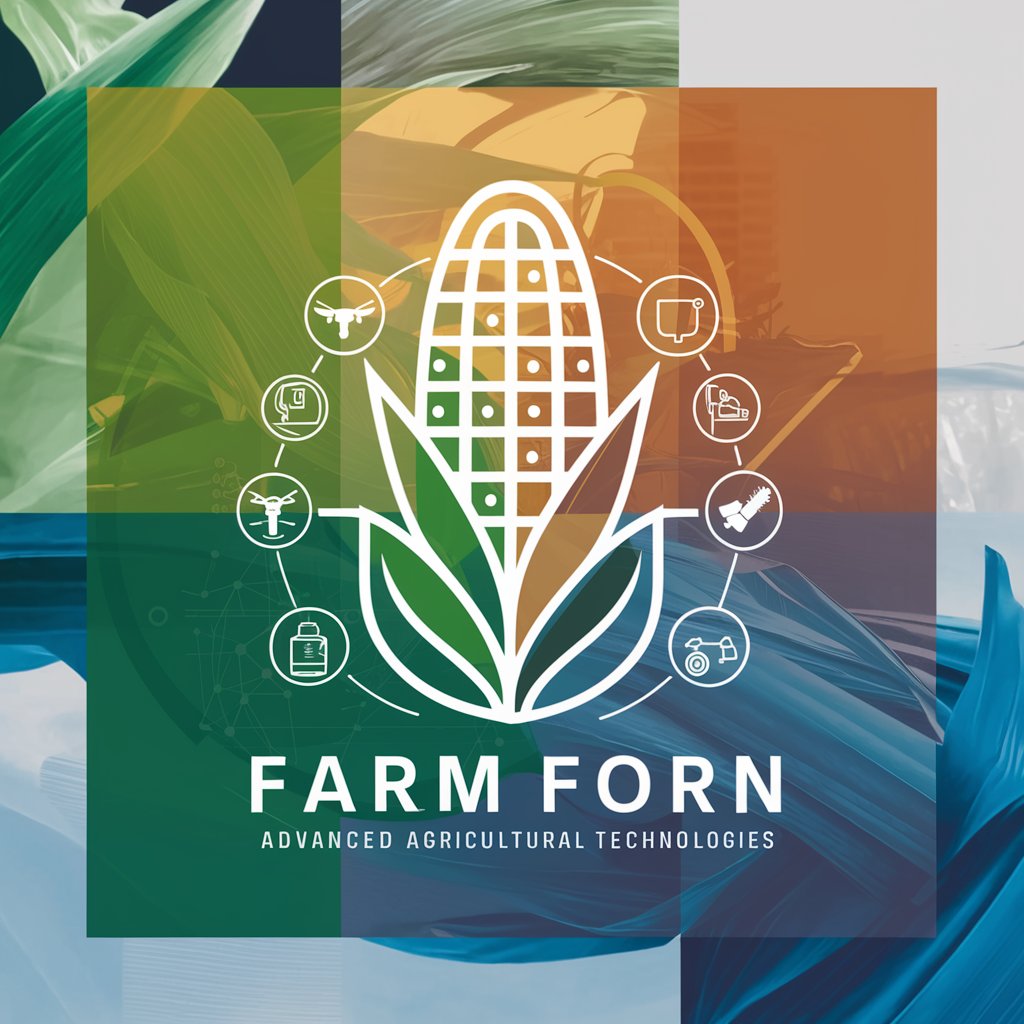agricultural technologies - Agricultural Tech Guide

Welcome to the future of farming with advanced technologies!
Powering Farms with AI Technology
Explain the impact of precision farming on crop yield.
Describe the role of IoT in modern agriculture.
How can drones be used for pest management in farms?
Discuss the benefits of automated irrigation systems in farming.
Get Embed Code
Introduction to Agricultural Technologies
Agricultural technologies encompass a broad range of tools, systems, and methodologies designed to enhance the efficiency, productivity, and sustainability of farming practices. These technologies are developed with the purpose of addressing various challenges in agriculture such as resource management, crop health monitoring, precision farming, and automation. Key examples include satellite imagery for field mapping, drones for aerial surveillance, autonomous tractors for plowing and harvesting, and IoT (Internet of Things) sensors for soil moisture and weather condition monitoring. These technologies enable farmers to make data-driven decisions, optimize resource use, and increase crop yields while minimizing environmental impact. Powered by ChatGPT-4o。

Main Functions of Agricultural Technologies
Precision Farming
Example
Using GPS-guided equipment to apply fertilizers and pesticides.
Scenario
Farmers utilize GPS technology to map fields and monitor crop yield variations. This allows for precise application of inputs only where needed, reducing waste and environmental impact.
Automated Irrigation Systems
Example
Smart irrigation systems that adjust watering based on soil moisture levels.
Scenario
With IoT sensors, these systems can detect the moisture content of the soil and automatically adjust irrigation schedules, ensuring optimal water usage without over or under-watering.
Crop Monitoring and Disease Prediction
Example
Using drones equipped with multispectral cameras to monitor crop health.
Scenario
Drones fly over a field, capturing images that reveal insights into plant health, identify pest infestations, and predict potential disease outbreaks, allowing for timely intervention.
Livestock Management
Example
Wearable sensors for health monitoring of livestock.
Scenario
Sensors attached to livestock can monitor health indicators such as temperature and movement, alerting farmers to any signs of illness or distress early on.
Supply Chain Optimization
Example
Blockchain technology for traceability of agricultural products.
Scenario
Blockchain provides a secure and transparent way to track the journey of food products from farm to table, ensuring quality and safety while enhancing consumer trust.
Ideal Users of Agricultural Technologies Services
Small and Medium-Sized Farmers
These farmers can significantly benefit from precision agriculture tools and automated systems to increase their productivity and manage resources more efficiently, even with limited labor.
Large Agricultural Enterprises
Large farms can leverage advanced technologies like autonomous vehicles, big data analytics, and AI for large-scale monitoring and management, optimizing operations across vast tracts of land.
Agricultural Consultants and Advisors
Experts in the field can use these technologies to provide more accurate advice to farmers, based on data collected from fields, improving the effectiveness of their consulting services.
Agritech Startups and Companies
Innovators and entrepreneurs in the agritech sector can develop new solutions or improve existing technologies, driving forward the modernization of agriculture.
Government and Regulatory Bodies
These entities can utilize agricultural technologies for better policy making, monitoring, and enforcement of agricultural regulations, ensuring sustainable farming practices are adhered to.

Using Agricultural Technologies: A Guideline
Start Your Journey
Begin by exploring yeschat.ai for a no-commitment trial, offering instant access without the necessity for a login or ChatGPT Plus subscription.
Identify Your Needs
Evaluate your agricultural operation to determine which technologies—such as precision farming tools, crop monitoring systems, or automated machinery—can best address your specific challenges and goals.
Select Suitable Technologies
Choose technologies based on your operation's size, type, and the specific outcomes you aim to achieve, such as increased yield, reduced costs, or improved sustainability.
Implement and Integrate
Gradually integrate chosen technologies into your farming practices, ensuring compatibility with existing systems and providing training for any involved personnel.
Monitor and Adjust
Regularly review the performance of implemented technologies, making adjustments as necessary to optimize results and return on investment.
Try other advanced and practical GPTs
Next js Helper
Elevate Your Next.js Projects with AI

URL codec
Simplify web text management with AI-powered encoding and decoding.

GPT CTF-2
AI with a guard on secrets.

Ethereum Sentiment Analyst
Insightful Ethereum sentiment analytics, powered by AI

Climate Advisor
Empowering Climate Action with AI

Help for an AI Skeptic
Navigating AI Skepticism with Informed Dialogue

Product Info Assistant
AI-powered insights at your fingertips

Papr Memory
Elevate your memory with AI

The Comic
Infusing AI with a sense of humor

The Secret of Gold Mountain: California Rush
Uncover fortune in a gold rush adventure.

Exascale Super App
Empowering innovation with AI-driven insights

Culinary Creator
Your Personal AI Chef, Transforming Ingredients into Culinary Delights

Frequently Asked Questions about Agricultural Technologies
What are agricultural technologies?
Agricultural technologies encompass a broad range of tools, systems, and methodologies designed to enhance the efficiency, productivity, and sustainability of farming operations. These can include precision agriculture, automated machinery, crop monitoring systems, and data analysis software.
How can precision agriculture benefit my farm?
Precision agriculture uses GPS, IoT devices, and data analytics to optimize field-level management regarding crop farming. Benefits include reduced input costs, increased crop yields, improved resource efficiency, and enhanced environmental sustainability.
What is the role of IoT in agriculture?
The Internet of Things (IoT) connects farming equipment, sensors, and devices to collect, exchange, and analyze data in real-time. This connectivity enables more informed decision-making, automates operations, and facilitates precise monitoring of crop and soil health.
Can agricultural technologies help in sustainable farming?
Yes, agricultural technologies play a crucial role in sustainable farming by optimizing resource use, reducing the need for chemical inputs, improving soil health, conserving water, and minimizing environmental impact.
What are the challenges in adopting agricultural technologies?
Challenges include the initial cost and investment, the need for technical skills and training, ensuring compatibility with existing systems, and the importance of selecting the right technologies to meet specific farm needs.
